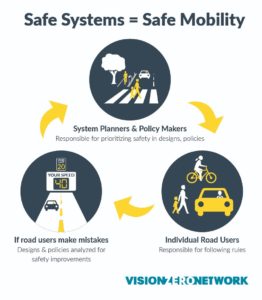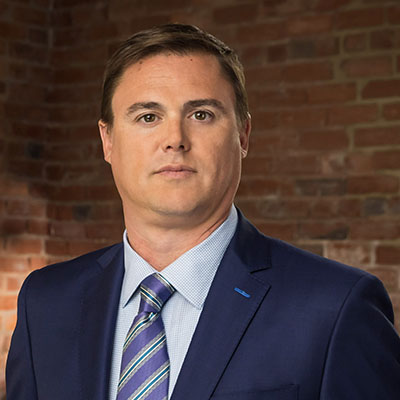
The statistics for car accidents shock the conscience. On average, every day 3,700 people lose their lives on the road. Motor vehicle crashes are the leading cause of death among young people ages 5-29 worldwide.
Concurrently, road travel is an essential component of American life. Data from the Bureau of Transportation Statistics shows that Americans take 411 billion drives (defined as going from one point to another on a single day) every year. That is nearly 1,500 trips per person, with the average driver spending nearly 55 minutes a day behind the wheel.
The conclusion is inescapable: lots of Americans regularly travel on roads and highways, and traveling on roads and highways is dangerous. It comes as no surprise that the internet is replete with articles, blogs, and information related to improving driver safety. This is an important topic that many countries all around the world struggle with.
One lesser-known, more formalized, approach to driver safety is the Vision Zero policy that was adopted by the Swedish Parliament in 1997. The aim of this policy is to design a road transport system that would eliminate any traffic-related deaths or serious injuries throughout the country.

The system was implemented in 2000, and over the following ten years, the number of deaths among Swedish car users decreased by 60%. Sweden’s roads are among the world’s safest, with only 3 of every 100,000 Swedes dying on the roads each year (compared to 10 in 100,000 Americans).
Vision Zero policies shift a portion of the responsibility for road safety from users to transport systems designers, aiming to create infrastructure and regulations designed to maximize safety. One aspect of the policy suggests maximum travel speeds that are directly related to infrastructure and roadway configuration. This would be taken in conjunction with the implementation of best practices in vehicle design and 100% restraint usage.
For example, at locations where conflicts between pedestrians and cars are possible, the maximum travel speed is set at 19 mph to eliminate high-speed impacts and catastrophic injuries. On roads with no possibility of side or frontal impacts (i.e. the travel lanes on a highway), the safest maximum speed for motorists is 62 miles per hour.

Photo courtesy of Vision Zero Network
Balancing the efficiency of road travel with a concern for traveler safety is a complex issue for lawmakers. In the United States, Vision Zero policies have been implemented at a variety of locations. Many preliminary initiatives focused on increased fines for speeding or outreach campaigns designed to focus greater awareness on traffic safety issues. In 2021, with legislators in Washington D.C. turning their attention to updating America’s infrastructure, the National Safety Council has started #ZeroTrafficDeaths. It asks lawmakers to incorporate Vision Zero policies into plans for domestic roadway improvement. Only time will tell if these efforts are successful.
A national commitment to zero traffic deaths seems, at least on its face, to be a lofty and largely political objective. However, the underlying foundations of the Vision Zero policy (as it was adopted in Sweden) make sense. If the scientific analysis is applied to roadway design and maximum speed limit designations are based on physics rather than commuter efficiency, American motorists will be traveling in an inherently safer environment.
If automotive manufacturers focus on advancing passenger safety technology, American motorists will also be traveling in safer vehicles. If there is an increased emphasis on safe driving, including bans on drivers holding personal communication devices while operating motor vehicles, American drivers will be safer behind the wheel. Working together, safer drivers can operate safer vehicles on safer roadways, which will inevitably lead to a dramatic reduction in traffic-related injuries and deaths. This is an outcome that everyone can stand behind.
If you have been injured in an auto accident through no fault of your own, you may be entitled to compensation. Call Allen & Allen today for a free consultation at 866-388-1307.




